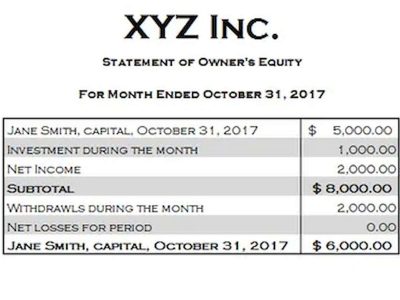
Navigating the financial ebbs and flows of seasonal production is a unique challenge for vineyards and wineries. https://www.bookstime.com/articles/accounting-for-architects The cyclical nature of grape cultivation and wine production means that cash inflows and outflows are not evenly distributed throughout the year. This irregularity necessitates a strategic approach to cash flow management to ensure that operations remain smooth and uninterrupted. Another method is Last-In, First-Out (LIFO), which assumes that the most recently produced items are sold first. While less common in the wine industry due to its potential to undervalue older, high-quality inventory, LIFO can be advantageous in a high-inflation environment. By matching recent, higher costs against current revenues, LIFO can reduce taxable income, offering a tax deferral advantage.

Accounting Services
Protea Financial offers wine accounting services tailored to meet your needs and help you understand the basics. It’s important to note that the requirement to use ADS will apply to all vineyard or farming assets for a specific taxpayer who’s elected to expense their pre-productive farming costs. For example, a taxpayer who capitalizes pre-productive costs would depreciate vines over a 10-year life.

Accounting and Tax Issues for Wineries

This overview is followed by several concrete examples of special accounting and tax issues that can affect wineries and vineyards, as well as fraud schemes that are present in the industry. These examples demonstrate the potential need for accounting expertise in this growing industry. Tax accounting for wineries involves managing excise taxes, sales taxes, and import/export taxes. Proper tax accounting ensures compliance with local and federal regulations, helps avoid penalties, and can optimize tax liabilities. Understanding tax obligations and benefits can significantly impact a winery’s financial health and operational efficiency. Inventory valuation determines the financial worth of a winery’s stock at any given time.
- Our performance improvement strategies will reduce expenses, stabilize cash flow, and minimize risk to increase profits so your business can grow.
- While labor-intensive, it offers unparalleled accuracy, making it ideal for limited-edition or vintage wines where each item’s cost and potential selling price can vary significantly.
- If it looks like a good fit, we will send over a proposal for you to sign and get your winery scheduled for onboarding.
- This ratio helps wineries identify areas where they might be overspending and where cost-saving measures could be implemented.
- It’s not just about keeping the IRS at bay; it’s about gaining insights into your business to make strategic decisions that enhance your profitability and growth.
- An outside entity can offer an unbiased perspective on missed costs and alternative ways to allocate the identified costs.
- This includes keeping tabs on what materials and labor went into creating specific vintages and blends.
Navigating Tax Season: A Food & Wine Business Owner’s Guide to Preparing Your Annual Income Tax Return

The charts below demonstrate how certain overhead and direct production costs might flow through the balance sheet and income statement. For this reason, most wineries track and report their wine inventory costs in separate inventory pools such as bulk wine, packaging materials, and finished cased wine. The vineyard origin indicates whether a particular appellation can be attached to the grapes produced in that region.
Accounting for Vineyards and Wineries
When managing a winery, one of the most crucial decisions you’ll make is how to handle your accounting. It’s not just about keeping the IRS at bay; it’s about gaining insights into your business to make strategic decisions that enhance your profitability and growth. Let’s dive into the core differences between accrual and cash accounting methods, and how choosing the right accounting method framework can significantly impact your winery’s management. Many internal controls utilized in other industries to protect against and detect asset misappropriation are relevant to wineries as well. For example, carefully vetting applicants for sensitive positions in the winery, including background and credit checks, can help to ensure an honest workforce.
- This is a fairly complicated calculation, so the wineries want to limit it to just two types of inventory, which are bulk wine and cased goods.
- SPID and FIFO costing are the most common methods used in a winemaking environment, especially because wine is typically vintage-based and tracked down to the individual wine stock-keeping unit (SKU).
- Isolating the costing pools at various stages of production aids in allocating period overhead costs more precisely and allows for more accurate tracking of the component costs of blended wines.
- Please seek guidance specific to your organization from qualified advisers in your jurisdiction.
- You will need to decide how much to spend on production overall, including how much to spend on grapes, glass, label, closures, and more.
- And furthermore, the winery may choose to sell off some wine in bulk before it reaches the bottling process, so that a good chunk of the wine volume never makes it to the end of the process.
- In this podcast episode, we discuss the accounting for vineyards and wineries.
A winery is not classified as a farm, since it’s more of a production operation, so wineries usually use the accrual basis of accounting. This difference means that a vineyard and a winery are set up as two separate entities, with the vineyard using the cash basis and the winery using the accrual basis. So, the accountant for a combined operation needs to be conversant with both approaches, and will need to maintain two sets of books.
How to Keep Your Growing Tech Company State and Local Tax Compliant
Of these four steps, the crush and bottling phases are quite short, while the other two can be very long. Based on your winery’s unique requirements, we will customize an accounting solution specifically for you. When calculating labor costs, it can be difficult to pin down the pay of executives and owners to any one specific department, let alone a single vintage. To account for these employees, portion out a slice of the revenue from each department that person accounting for vineyards and wineries regularly attends to.
Accounting for the Cost of Making and Selling Wine
Lowering your overall COGS will help increase your profit marge, but there are plenty of considerations to carrying this out successfully. While those costs are being accounted for, it’s also vital to track the movement of your inventory. This includes keeping tabs on what materials and labor went into creating specific vintages and blends. Vineyards and wineries flourish through strategic financial management and operational efficiencies. Winery and vineyard business petty cash owners can benefit from performing a detailed analysis of their company’s specific situation to determine which, if any, actions to take. For more information on how tax reform may affect your planning through the year, contact your Moss Adams professional or view our tax-planning guide.
コメント